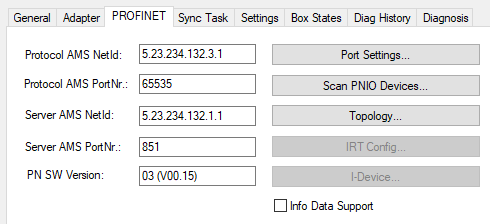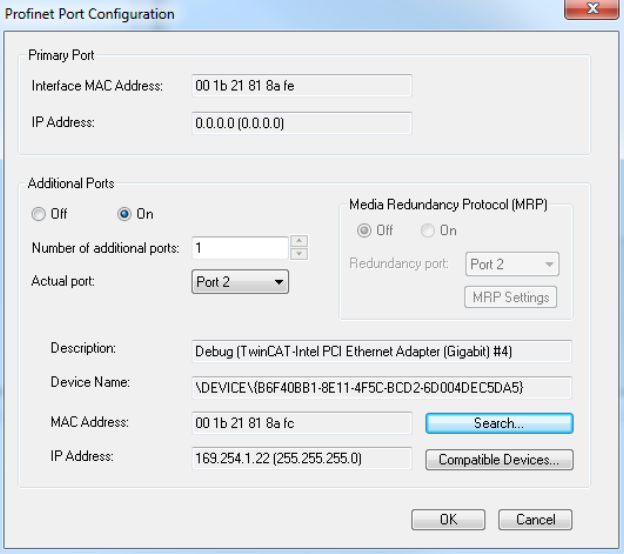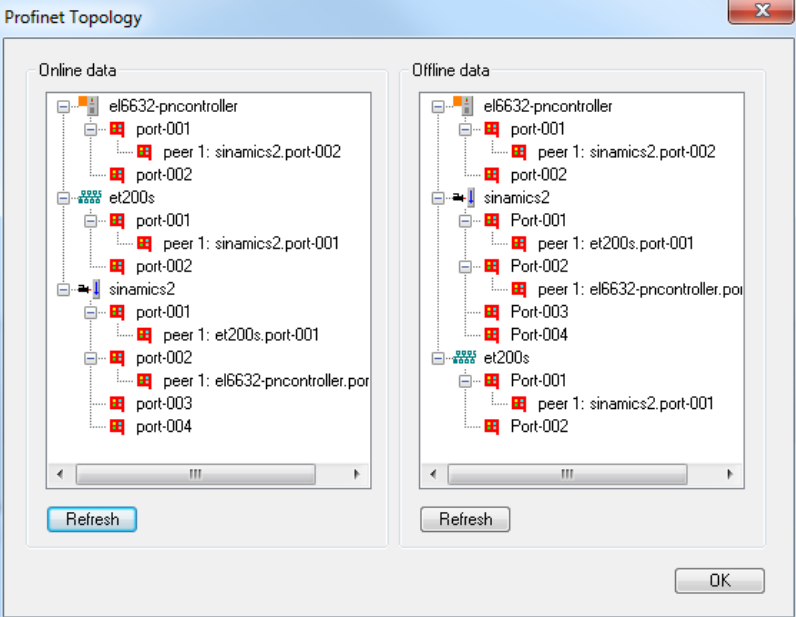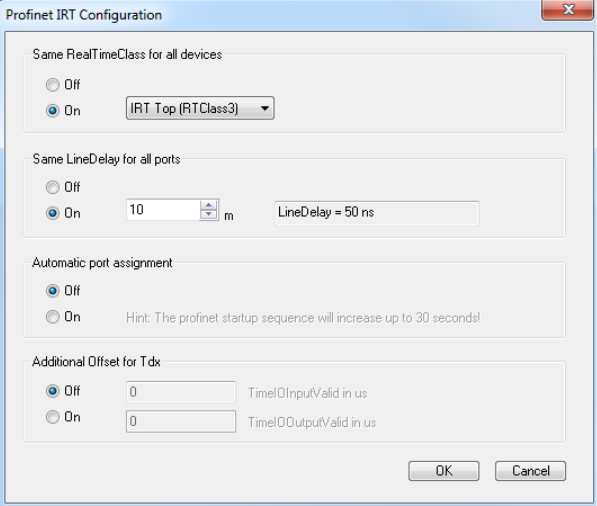PROFINET

Protocol AMS NetId
This is the NetID via which the PROFINET controller protocol can be reached via AMS.
AMS PortNo protocol
This is the PortNo via which the PROFINET controller protocol can be reached via AMS. This is always fixed to 0xFFFF
Server AMS NetId
This is the NetID to which certain AMS messages (e.g. PN records within the index range 0x1000 - 0x1FFF) are forwarded by the PROFINET driver. Currently this is always the SystemNetId.
AMS PortNo server
This is the PortNo to which certain AMS messages (e.g. PN records within the index range 0x1000 - 0x1FFF) are forwarded by the PROFINET driver. By default this is the PLC Port 802 of runtime system 1.
PN SW version
Firmware version of the device
Port Settings
This feature is currently only approved for the Real-Time Ethernet protocol (no EL663x). With this a second PROFINET port and an intelligent switch can thus be realized with a second network card (Intel chipset) . It is intended to repeat this feature x times; however, it is presently limited to one additional port.

Scan PNIO Devices
Opens a search dialog for PROFINET devices; only available for the controller.
Appending via the Scan function
Topology
The offline topology can be compared with the online topology via this dialog.

It is quite possible for a device to have several partners on a port in the online view. This is the case, for example, if a switch is used in PROFINET that does not support LLDP (protocol for neighborhood ID). In offline view partners may have been assigned that do not exist in the project. This takes place if the reading of the port properties was activated during automatic scanning and appending. In this case the device has a ‘neighbor’ that is adopted into the project, but the associated device box is missing from the *.tsm file. When this project is enabled, the "neighbor" that is not present in the *.tsm file is ignored in the driver.
IRT Config
This menu is only enabled for an IRT-capable controller (currently only EL6632). A global setting can be made for all projected devices via this menu.

On the one hand the type of communication can be specified here. At present only RTClass1 (RT) and RTClass3 (IRT Top) are supported. In addition there is an option in this dialog to specify a general cable length (for IRT only). An approximate value or the max. cable length is sufficient here, because for the calculation of IRT communication this value tends to be lower (at 100 Mbaud and copper cable 5 ns/m). For optimization this feature can also be deactivated again later and the exact cable length can then be entered for each individual device (on the port submodules). Furthermore there is an option here to activate an ‘automatic port assignment’. As a result of this the port connection set in the TwinCAT project is irrelevant. Before each restart of the PN communication the topology is read out and the IRT communication is calculated on the basis of this. The advantage of this is that possible cabling errors are minimized. In addition to that the ports can be simply replugged without having to change and reload the TwinCAT project. Only a restart of the PN communication is required (e.g. switch terminal to PREOP or disconnect the cable). As a result of this the start-up of the PROFINET communication can take up to 30 seconds longer. The reason for this is the TTL (TimeToLive) factor in the LLDP MIB. These are set by default to 20 seconds, i.e. only after this time can it be guaranteed that the port connection read is also the current one. Also, an additional offset for all Ti / To values can be specified in this menu.
I-Device
Opens a dialog for simultaneous parameterization of a controller AND device interface. Only available at CCAT.
Info Data Support
If this option is activated, the AMSNETID is also available in the TwinCAT tree and can then be linked accordingly.